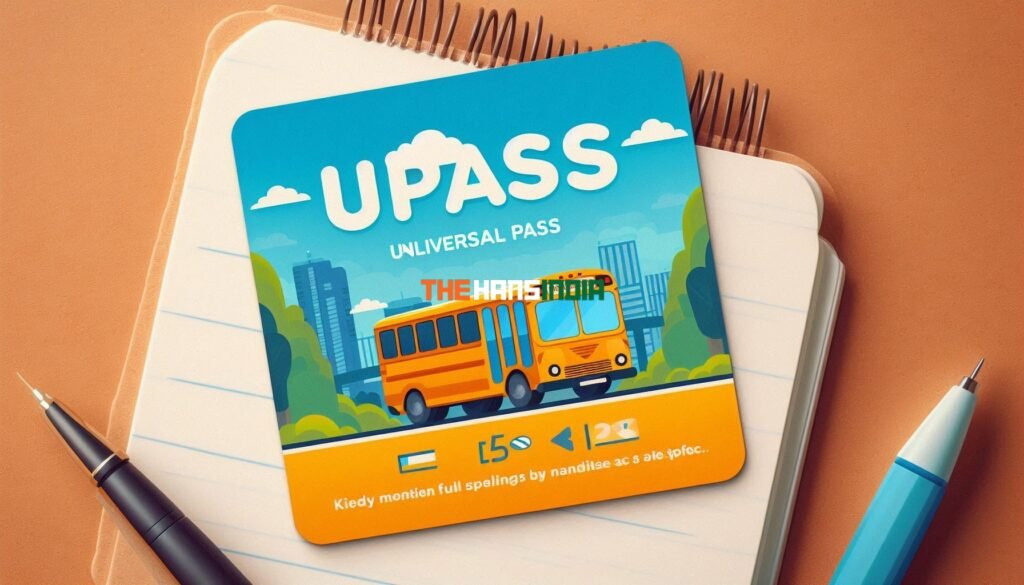Introduction
In today’s fast-paced world, having a convenient and cost-effective way to travel is more important than ever. This is where the UPass comes in—a powerful solution for students and commuters alike. If you’re unfamiliar with UPass or want to know more about how to make the most of it, you’re in the right place. In this comprehensive guide, we’ll cover everything you need to know about UPass, from what it is to how it works, and answer some of the most frequently asked questions.
What is UPass?
UPass, short for Universal Pass, is a transportation program that provides students and sometimes employees with unlimited access to public transit services at a reduced cost. It is a widely used program in various cities and educational institutions across North America, offering significant savings and convenience for those who rely on public transportation.
- Universal Access: UPass typically offers unlimited access to buses, subways, and other forms of public transportation.
- Cost-effective: Instead of paying for individual rides, users pay a flat fee, often included in their tuition or through an employer subsidy.
- Eco-friendly: Encourages the use of public transport, reducing the carbon footprint.
Who Can Use UPass?
UPass is primarily aimed at students attending universities, colleges, and other educational institutions. However, some cities extend this program to include employees of certain organizations or even the general public.
- Students: The most common beneficiaries of UPass, as it helps them commute to and from campus easily.
- Employees: In some cases, UPass is offered to employees as part of corporate benefits.
- General Public: A few cities may provide similar programs for their residents, though these are often branded differently.
Benefits of UPass

UPass offers several advantages that make it a popular choice among students and other users:
- Cost Savings: UPass is typically much cheaper than purchasing individual tickets or monthly transit passes.
- Convenience: With unlimited access, users don’t have to worry about running out of tickets or paying for each ride.
- Reduced Carbon Footprint: By encouraging the use of public transportation, UPass helps reduce the number of cars on the road, contributing to environmental conservation.
- Accessibility: UPass makes it easier for students and employees to access education and work opportunities, especially in areas where transportation costs might be a barrier.
- Stress Reduction: No more worrying about parking, gas, or maintenance costs associated with driving.
How to Get a UPass
Obtaining a UPass is usually a straightforward process. Here’s a step-by-step guide:
- Eligibility Check: First, confirm if you’re eligible for UPass. If you’re a student, check with your institution. If you’re an employee, inquire with your HR department.
- Registration: Once eligibility is confirmed, register for the UPass program. This is often done automatically for students during course registration.
- Pick-Up or Activation: Depending on your location, you may need to pick up a physical pass or activate it through an app.
- Usage: After activation, start using your UPass to access public transportation. Simply tap or show your pass when boarding.
Common UPass Providers
Several cities and institutions across North America offer UPass programs. Here are a few examples:
- Toronto, Canada: The UPass program is available to students at several universities, including the University of Toronto.
- Seattle, USA: UPass is offered at the University of Washington, providing students with unlimited rides on buses and light rail.
- Vancouver, Canada: The U-Pass BC program covers students at many post-secondary institutions, offering access to TransLink services.
These are just a few examples, but many other cities and schools have similar programs. It’s worth checking with your local transit authority or educational institution for details specific to your area.
UPass and Technology: The Shift to Digital

In recent years, many UPass programs have transitioned from physical cards to digital formats, making the process even more convenient. Here’s how technology is enhancing the UPass experience:
- Mobile Apps: Many transit systems now offer UPass through their mobile apps, allowing users to access their pass directly from their smartphones.
- Contactless Payments: Some programs integrate UPass with contactless payment systems, streamlining the boarding process.
- Automatic Renewals: Digital UPass systems often include automatic renewals, so users don’t have to worry about their pass expiring.
FAQs about UPass
1. Can I opt out of the UPass program?
In most cases, UPass is a mandatory fee for eligible students, and opting out is not allowed unless you meet specific criteria, such as living outside the service area.
2. What happens if I lose my UPass?
If you lose your UPass, contact the issuing authority immediately. There may be a replacement fee, but your lost pass will typically be deactivated to prevent misuse.
3. Can I transfer my UPass to someone else?
No, UPass is non-transferable and intended for use only by the individual to whom it was issued.
4. Does UPass cover all forms of transportation?
While UPass typically covers most public transit options, such as buses and subways, it may not include specialty services like express trains or ferries. Always check with your local transit authority for details.
5. How long is my UPass valid?
UPass validity usually aligns with academic terms or employment periods. Ensure you know the specific dates your UPass is active.
Conclusion
The UPass program is a powerful tool for students, employees, and commuters, offering significant cost savings, convenience, and environmental benefits. Whether you’re a student navigating your way to campus or an employee looking for a more economical way to commute, UPass is worth considering. Be sure to check your eligibility, understand how to use it, and enjoy the many advantages it brings to your daily travel.
Read more on Thehansindia.


